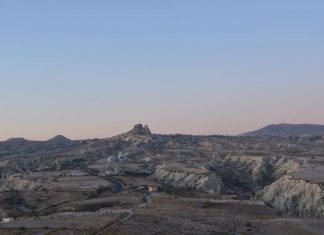Each of the three positions was distinct. The Nestorians imagined Christ’s divinity as a kind of benign possession, a god’s mind in a mortal’s body; the monophysites envisioned a magical new kind of being; the Chalcedonians put forth a logical construct, yet still quite difficult to grasp and comprehend, and they made this incomprehensibility into a virtue, at least as far as they could. If the scriptures were contradictory and confusing, they represented not conflict, but rather a lofty, divine logic that mortals could not grasp, and became evidence of the truth of a logically paradoxical doctrine. The figure of Jesus was smothered by these different representations of Christ, and the gospels dropped back to second place in such attempts to resolve the discordances of scripture into a philosophically satisfactory doctrine.29
Paradox and irony do not easily win a mass audience away from confident assertion and certainty. Churches that call themselves orthodox or catholic today accept Chalcedon, but in every age since 451 Chaldedon’s position has been challenged. Often in the early decades and centuries, the Chalcedonian position was that of only a minority of those with any capacity for understanding what was at stake. No sooner was the council over than strong forces attempted to subvert it, and the emperor Marcian did not last long enough to sustain the position he supported. By 457, a mob lynched the orthodox Chalcedonian patriarch of Alexandria, Pro- terius, making it clear that leaders could not impose official orthodoxy from above ski holidays bulgaria.
Emperors in the fifth century could still be pragmatic and thoughtful about religion. Few were as effective as the emperor Zeno. He must have been a novice in matters of religion, but he saw the threat to imperial government implied in religious disagreement and moved—with good theological advice—to close a widening gap between those who accepted the Chalcedonian position and those who insisted on the high majesty of the divine and the single nature of the Christ. The “unity document” (Henotikon) that Zeno disseminated is a masterpiece of diplomacy and judgment. If no theologians and only statesmen had been involved in such a thing, it would have been acclaimed.
Theologians responded to the Henotikon
Theologians responded to the Henotikon, and politics intervened. Not only were there hard partisans, in Zeno’s own domains, of the two positions he sought to bridge (more single-nature believers in Egypt, more Chalcedonians at that point in Syria and Palestine and the areas around Constantinople), but the west lay tantalizingly beyond his grasp. The bishop of Rome—Leo I, who in later history came to be called, for his pains, Leo the Great—had been the strongest partisan of the Chalcedonian “both-and” position at the time of the council, and his successors invested heavily in loyalty to that position.
Zeno could not expect much help from Odoacer, who was in command in Italy at the time of the Henotikon, perhaps implicated in the revolts against Zeno, and with plenty of other more urgent business at hand, including a desire not to aggravate relations with the dignitaries of Rome and especially their bishops. We have seen how from 484, the bishops of Rome and the Chalcedonian loyalists behind them refused to share communion with those who were at peace with Zeno’s church patriarch Acacius, and from then until 519, eastern and western churches were officially in a state of schism Athanasius of Alexandria.
Even though would-be moderates controlled both Rome and Constantinople, their respective definitions of moderation fell on different parts of the spectrum. As long as they could not agree, the emperor of Constantinople and his patriarch could not use the west as a balancing force against the one-nature zealots, who proceeded to make hay in the east. From the 480s to the 510s, these zealots were assiduous and faithful to their belief and saw their influence expand.
The emperor Anastasius I
The emperor Anastasius I, who succeeded Zeno in 491 and reigned until 518, belonged to the monophysites in all but name. In 511, he banished the patriarch of Constantinople, Mace- donius, for supposedly Nestorian but in fact Chalcedonian sympathies. Macedonius’s successor, Timothy, was imprudent enough to introduce an explicitly monophysite proclamation into the liturgy in the great church, however, and riots broke out. Anastasius weathered this crisis, and the threat of a coup, which he put down brutally; we will shortly meet one of the victims of that suppression.







